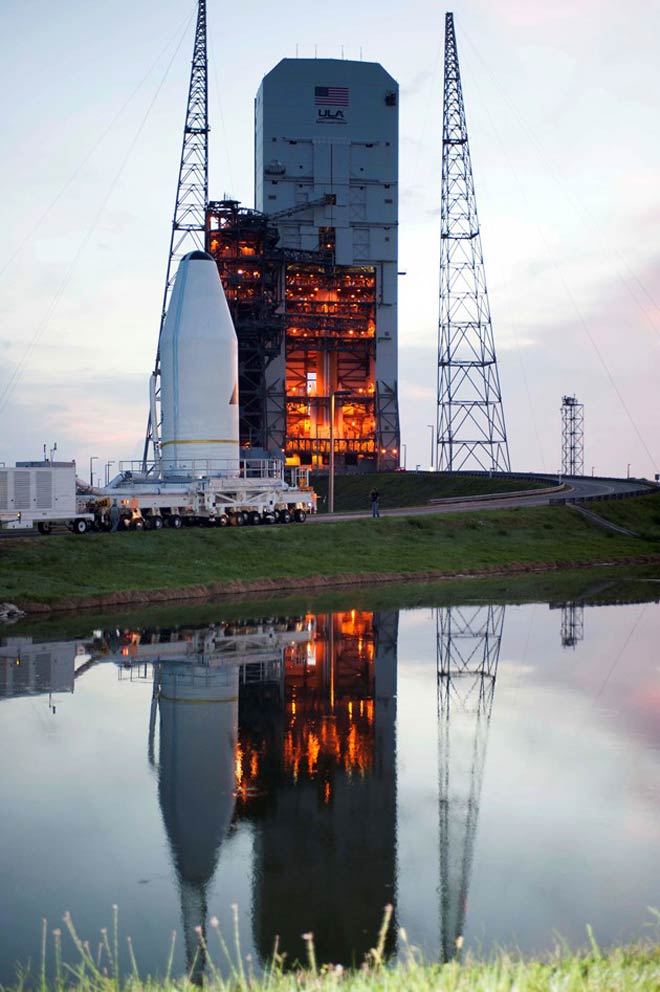
The AFSPC-4 mission, set to launch on a Delta IV Med+ (4,2) from Space Launch Complex-37 at Cape Canaveral Air Force Station, will deliver two Geosynchronous Space Situational Awareness Programme (GSSAP) satellites to near-geosynchronous orbit. The AFSPC-4 mission also includes an Automated Navigation and Guidance Experiment for Local Space (ANGELS) satellite. Photo: ULA.
WASHINGTON (AFP): The US Air Force will launch new satellites on Wednesday to track those of other countries and counter possible threats to American spacecraft, officials said.
Two satellites are due to be sent into high-altitude orbits for the first time as part of a programme that until a few months ago was strictly secret and classified.
The satellites will be launched from Delta IV rockets from Cape Canaveral Air Force Station in Florida and head to the geosynchronous belt, 35,900 kilometres above Earth, where crucial US satellites are also orbiting.
"This neighbourhood watch twosome will help protect our precious assets in geo (high-altitude orbit), plus they will be on the lookout for nefarious capability other nations might try to place in that critical orbital regime," US Air Force Space Command chief General William Shelton told reporters.
Shelton said the satellites would dramatically improve the US military's picture of satellite traffic in the geosynchronous orbit, as the new satellites will be much closer at the higher altitude.
Current space surveillance is conducted from the Earth or from lower altitudes of a few hundred miles above Earth.
The project is known as the Geosynchronous Space Situational Awareness Programme, or GSSAP, and was first publicly acknowledged in March.
Shelton said the military was now ready to talk about the project partly because officials wanted to send a message to nations plotting to undermine or disable US satellite networks.
Publicising the programme will serve as a "deterrent" and warn adversaries that "you can run but you can't hide," the general said.
Senior officers and intelligence officials are increasingly concerned about space and anti-satellite weapons fielded by China and others that could potentially cripple the communications networks that underpin US military power.
Shelton said the new satellites would bolster the US military's ability to spot adversaries threatening strategic and early-warning satellites in high orbits.
But he said the United States had to start designing future satellites that could survive the more dangerous conditions, and ensure the spacecraft had missile warning mechanisms and more secure communications.
"There are a myriad of counter-space threats that we are seeing on the near horizon," Shelton said, saying space was no longer a "peaceful sanctuary."
 Previous Article
Previous Article Next Article
Next Article













The Indian Air Force, in its flight trials evaluation report submitted before the Defence Ministry l..
view articleAn insight into the Medium Multi-Role Combat Aircraft competition...
view articleSky enthusiasts can now spot the International Space Station (ISS) commanded by Indian-American astr..
view article